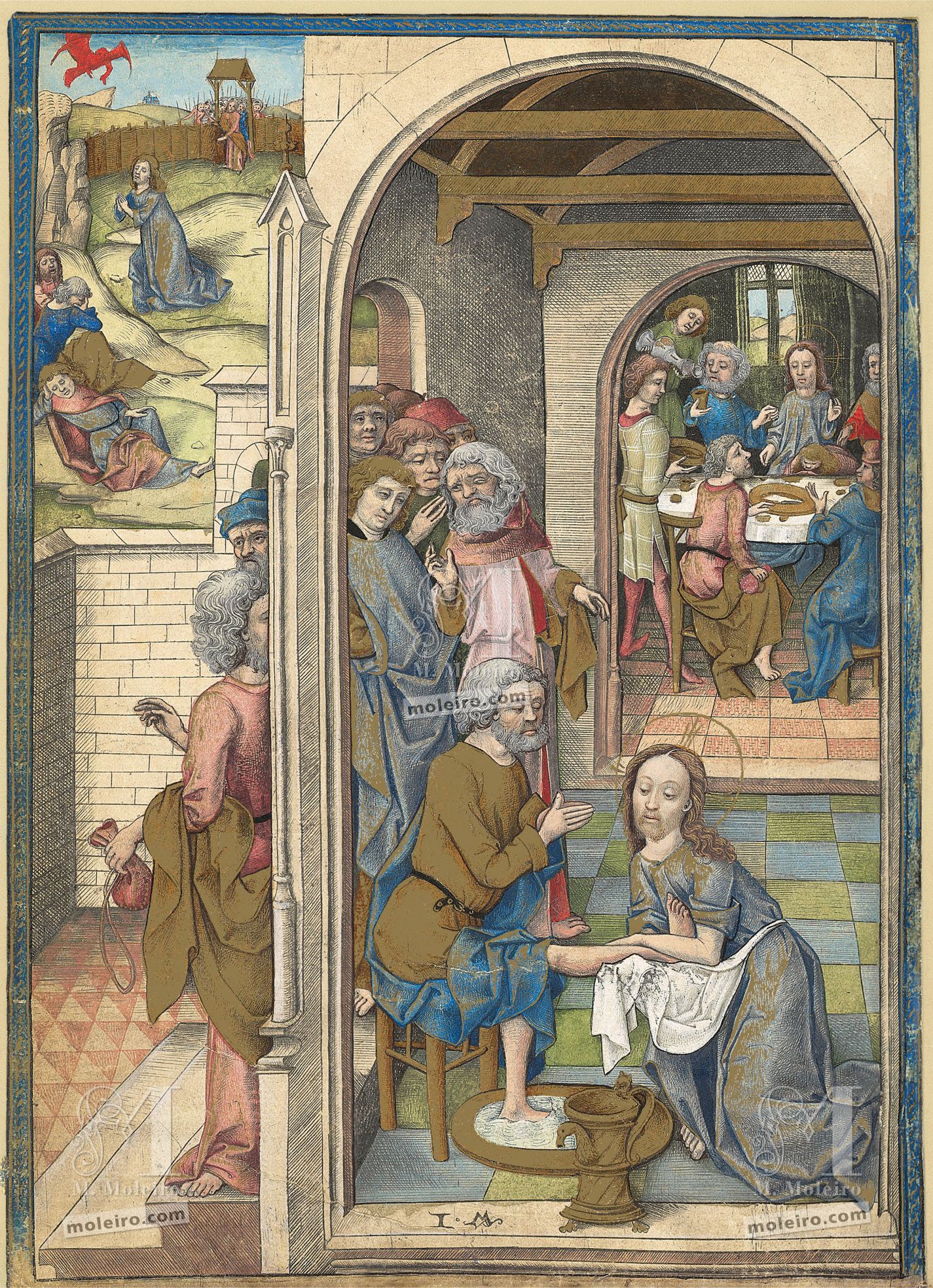Traditionally, Christ’s Passion always begins with his last meal with the apostles, i.e. the Last Supper. According to the Gospels, on the eve of the Jewish feast of the Passover, Jesus left the table, lay down his garments and wrapped a cloth around his waist. He began to wash and dry the feet of each disciple, prompting Peter, who did not understand, to ask him indignantly why he stooped so low. Hence the foot-washing episode represents Christ’s humility, his love for the apostles, and his command that they should love each other and stay together. After the Last Supper, Christ withdrew into the garden of Gethsemane with Peter, John and James, and then suffered alone the anguish of his imminent arrest and death.
By using certain spatial dynamics in the Last Supper and the foot-washing scene the engraver links up the three scenes and anticipates those to come. Each episode is set in a different room and different figures provide the link between them: Judas coming through the doorway, bag of money in hand, prepares the readers for Christ’s arrest in the next print. Meckenem’s mastery of space and perspective are consonant with his knowledge of Flemish art, particularly the triptych altarpiece of St John the Baptist dated 1455-1460 (Berlin, Gemäldegalerie) by Rogier van der Weyden. Meckenem’s sequence of indoor rooms was greatly inspired by its right-hand panel depicting the saint’s decapitation.
Séverine Lepape
Curator
Musée du Louvre
